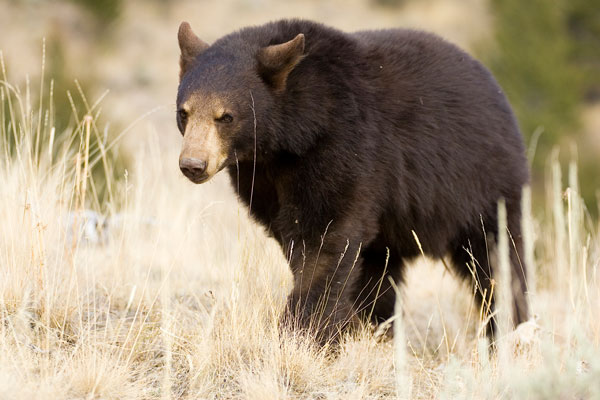
By Dan Zarlenga, Missouri Department of Conservation
Photo Caption: Bears are no longer just hanging out in the deep Ozarks—you could possibly see one in your area someday! Photo courtesy of the Missouri Department of Conservation.
Many people think of bears as only living deep in the remote Ozark forests of Missouri. And for a long time, that was true. Times are changing though, and so are the places where we can expect to see bears.
The only species of bears that occur in Missouri is the American black bear (Ursus americanus). So, no grizzlies or brown bears here. Black bears are one of the largest and heaviest wild mammals found in Missouri and can weigh in at several hundred pounds! They are recognized by their long muzzles, rounded, erect ears, stout legs, and a very short tail. Black bears are covered in long, heavy fur which is usually jet black. Yet black bears can be found in multiple color phases within the Show-Me-State, so their fur can appear brown, red, or even cinnamon in color. They’re all still the same species of black bear though.
The vast majority of our black bears do live in the deep forests of the southern Ozarks. But because our black bear population is growing at about 9% each year and expanding their range, bears are starting to show up in areas further north, including St. Charles and St. Louis Counties. That means we can expect to see bears more frequently in our area as time goes by.
Why do bears move so much? It turns out that this time of year, late spring to early summer, is the prime time for bears to get hit with the wandering itch. One-and-half year old bears are beginning to leave their mothers and to start new lives. At this point they are going through a similar phase of life as many 20-something humans. These young bears begin to explore new territory, look for food, and an area to settle. The older, adult males also start moving large distances around this time in search of females. A bear on the move can travel a hundred miles our more on its quest. This is why we are slowly seeing them move north over time.
Black bears are omnivorous, which means they eat a huge variety of foods. Their menus might include grass, berries and other fruits, seeds, and nuts. They’ll also dine carnivorously when they have the chance chowing down on insects, fish, frogs, small rodents, fawns, bird eggs, and even dead animals.
Since bears need a lot of calories and will eat almost anything, including garbage, pet food or grill drippings that we might leave in our backyards, it’s important to secure all these items in garages, basements, or sheds whenever bears are sighted in the area. Bears are mostly shy and non-aggressive, but those who find these food sources and get used to eating them can cause problems for people—so we need to remove any temptations. It’s always best to keep a distance if you see a bear and let it go about its business.
So, if you hear about bear sightings in your area, feel free to get excited knowing these awesome and fascinating creatures are calling Missouri home one again. Just bear in mind some commonsense tips so bears and people can co-exist peacefully.


